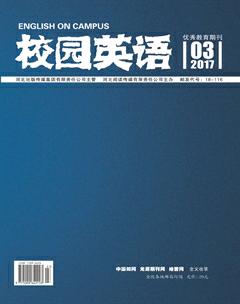Reading In Second Language
【Abstract】Reading, as one of the four skills—listening, speaking, reading and writing, is very important for language learning. For different reading purposes, we maybe use different skills.
【Key words】 Reading; Relationship; Issues; Strategies.
1. Different reading purposes
Scanning text is what you do when you are searching for particular in formation, or checking to see whether a passage is relevant.
For reading in second language, the two purpose— “reading for understanding” and “reading to learn” is more important than other purposes. The two purpose may involves learners phonological, morphological, syntactic, semantic, other linguistics knowledge and their attitude, goals set, ability of comprehension, ability of interpreting, and so on.
2. The relationship between L1reading and L2 reading
L1 reading influences L2 reading, this is one aspect of linguistic transfer/language transfer. It is the transfer of linguistic features between languages in the speech repertoire of a bilingual or multilingual individual, whether from first to second, second to first or many other relationships. It is most commonly discussed in the context of English language learning and teaching, but it can occur in any situation when someone does not have a native-level command of a language, as when translating into a second language. It contents positive transfer and negative transfer. Although the use of the L1 in L2 reading is still a relatively under-researched domain, it is becoming clear that the L1 is ever-present for bilingual individuals. While they are reading in the L2, bilinguals think about texts in their L1, and unconsciously translate and paraphrase texts into their L1.
The participants applied a variety of different comprehension and monitoring strategies and, in contrast to the Bernhardt study mentioned above and did indeed backtrack as they read and did re-read texts, possibly because they were allowed to do so in their L1.
3. Issues in L2 reading
And how to improve the reading ability is very important for L2 learners. Meanwhile, there are issues exist in L2 reading. The first is the vocabulary. There are a number of issues that center on the contributing role of vocabulary knowledge for L2 reading ability:(1) the number of words needed to read L2 text independently and for instruction uses.(2) the role of context in L2 vocabulary acquisition and in the guessing of word meaning in L2 reading.(3) the role of dictionary of various kinds and the use of cognates in L2 vocabulary acquisition and in L2 reading.(4) the ways L2 learners go about the task of acquiring vocabulary in the L2.(5) the role of extensive or pleasure reading in the “incidental”acquisition of L2 vocabulary and the role of vocabulary instruction.(6) the impact of various kinds of vocabulary instruction on L2 vocabulary development. Word-base, to a large extent, influence readers speed, reading comprehensions and their learning effectiveness.
4. Strategies for L2 reading
Semantic mapping, making an arrangement of words into a picture, which has a key concept at the center or at the top, and related words and concept linked with the key concept by means of lines or arrows. Cognitive strategies are very important and useful for four language skills. Practicing naturalistically—practicing the new language in natural, realistic setting, as in participating in a conversation, reading a book or article, listening to centers on using for actual communication. Practicing naturalistically also means using the language in an authentic way for reading comprehension. In addition, getting the idea quickly, literal meaning is get the idea of a passage quickly. This strategy means using skimming to determine the main ideas or scanning to find specific details of interest. Preview question often assist. This strategy involves skimming and scanning. Taking notes—writing down the main idea or specific points.
5. Conclusion
Reading is very important for second language learners. we should overcome some negative factors and take full advantage of positive factors to enhance our reading comprehension. Vocabulary is the key for reading, appropriately using dictionary and applying compensation strategies to overcome this point.
References:
[1]Norbert Schmitt,an introduction to applied linguistic.
[2]Moyra Sweetnam Evans,A Case for Using First Language Group.
[3]Discussions to Facilitate Second Language Reading Comprehension.
作者簡介:史金礼(1991-), 女, 汉族, 山西运城人, 在读研究生, 单位:山西师范大学外国语学院, 研究方向:外国语言学及应用语言学, 第二语言阅读。

